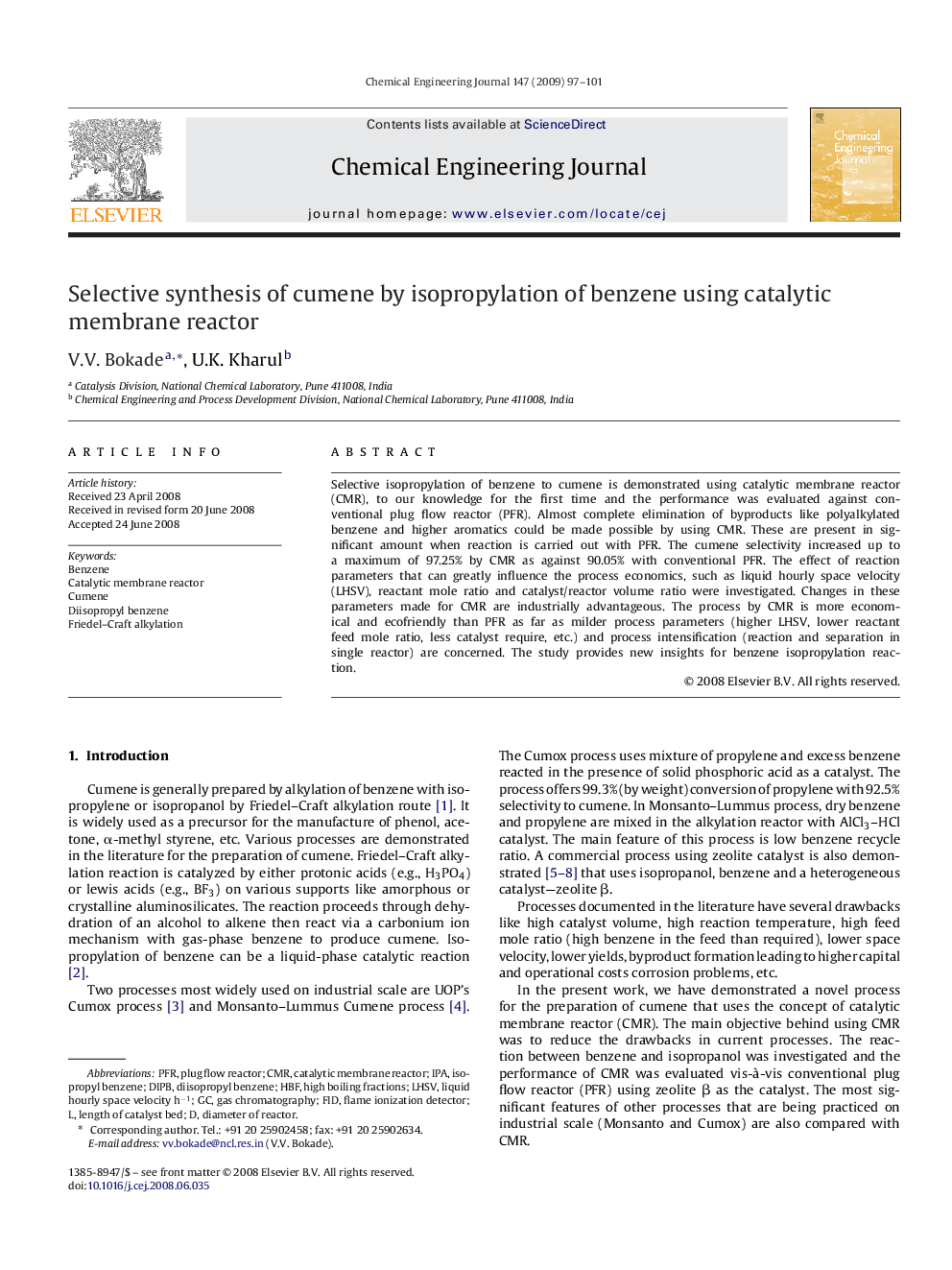| Article ID | Journal | Published Year | Pages | File Type |
|---|---|---|---|---|
| 152533 | Chemical Engineering Journal | 2009 | 5 Pages |
Selective isopropylation of benzene to cumene is demonstrated using catalytic membrane reactor (CMR), to our knowledge for the first time and the performance was evaluated against conventional plug flow reactor (PFR). Almost complete elimination of byproducts like polyalkylated benzene and higher aromatics could be made possible by using CMR. These are present in significant amount when reaction is carried out with PFR. The cumene selectivity increased up to a maximum of 97.25% by CMR as against 90.05% with conventional PFR. The effect of reaction parameters that can greatly influence the process economics, such as liquid hourly space velocity (LHSV), reactant mole ratio and catalyst/reactor volume ratio were investigated. Changes in these parameters made for CMR are industrially advantageous. The process by CMR is more economical and ecofriendly than PFR as far as milder process parameters (higher LHSV, lower reactant feed mole ratio, less catalyst require, etc.) and process intensification (reaction and separation in single reactor) are concerned. The study provides new insights for benzene isopropylation reaction.
